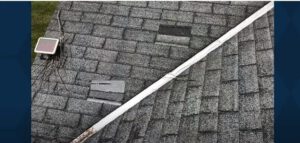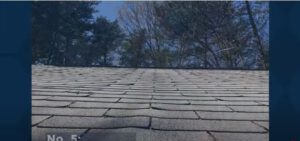 Roof leaks are a prevalent issue in Australian homes, often leading to significant property damage if left unaddressed. The diverse weather patterns and unique climatic conditions in Australia often contribute to this problem. Understanding the common causes of roof leaks can help homeowners prevent damage and ensure the longevity of their roofs. This article provides a comprehensive overview of the most common causes of roof leaks in Australia.
Roof leaks are a prevalent issue in Australian homes, often leading to significant property damage if left unaddressed. The diverse weather patterns and unique climatic conditions in Australia often contribute to this problem. Understanding the common causes of roof leaks can help homeowners prevent damage and ensure the longevity of their roofs. This article provides a comprehensive overview of the most common causes of roof leaks in Australia.
Improper Installation
One of the major causes of roof leaks in Australia is improper installation. This can be caused by hiring inexperienced contractors or not allowing the correct amount of time for the roof to cure before installing other components on top of it. Improperly installed roofs can be further exacerbated by strong winds and heavy rains, which can cause them to become loose and lead to leaks.
Heavy Storms
Heavy storms and torrential rains can cause a lot of damage to roofs, even if they were properly installed. Shingles and other roofing materials can be blown off or help water penetrate the underlying material, leading to leaks. Strong winds can also result in gaps between tiles or shingles that allow moisture to enter the home. The best way to protect your roof from the elements is to ensure that it is installed properly and that you keep up with regular maintenance such as cleaning out gutters, checking for loose shingles, repairing any cracks or holes, and replacing broken tiles.
Age and Weathering
Roofs are continually exposed to the elements, and over time, even the most robust roofing materials can deteriorate. Weather extremes, from intense summer heat to heavy winter rains, cause expansion and contraction that may lead to cracks and leaks. Particularly, Australia’s high UV radiation levels accelerate the ageing of roofing materials, leading to brittleness and subsequent leaks.
Blocked Gutters
Blocked gutters are a frequent cause of roof leaks. When leaves, twigs, and other debris accumulate in gutters, they hinder the flow of rainwater, causing it to back up and possibly seep into the roof structure. Regular cleaning of gutters and installation of gutter guards can help prevent this problem.
Gutter play a vital role in protecting your roof and home from water damage. By ensuring rainwater is directed away from the house’s walls and foundations, gutters help prevent both rot and mould from forming.
Damaged Roof Valleys
Another common source of roof leaks is the creation of breaks in a roof’s valleys. Valleys are open spaces that form on sloped roofs where two sections meet. These areas can become damaged due to improper installation, age, or environmental wear and tear. When this happens, water can seep into the attic or home interior.
Cracked or Broken Tiles
 Cracked or broken roof tiles are another common cause of roof leaks. Hailstorms, falling branches, or even foot traffic during roof maintenance can damage tiles. Water can then penetrate these damaged areas, leading to leaks. Regular roof inspections can help identify and rectify such issues promptly.
Cracked or broken roof tiles are another common cause of roof leaks. Hailstorms, falling branches, or even foot traffic during roof maintenance can damage tiles. Water can then penetrate these damaged areas, leading to leaks. Regular roof inspections can help identify and rectify such issues promptly.
Corrosion of Roof Valleys
The valleys of a roof are prone to leaks, particularly in regions with heavy rainfall. Over time, these areas can corrode, particularly if they’re made from metal. The corrosion can create gaps through which water can infiltrate, causing leaks.
Skylight and Vent Leaks
Skylights and vents add to a home’s aesthetics and comfort, but they can also be potential leak points if not properly installed or maintained. The sealant around these fixtures can deteriorate over time, allowing water to seep into your home. Regular inspection of these areas can prevent water damage.
Poorly Sealed Flashing
Roof flashing is a type of sealant used around intersections and projections, such as chimneys and vent pipes, to prevent water leakage. However, over time, flashing can become dislodged or corrode, particularly in coastal areas of Australia where the salt-laden air accelerates corrosion. Regularly checking and maintaining the flashing can prevent water intrusion.
Conclusion
Preventing roof leaks in Australia involves understanding their common causes and taking proactive measures to address these issues. By maintaining your roof regularly, inspecting for damage, and ensuring correct installation of roofing components, you can significantly reduce the risk of leaks and prolong your roof’s lifespan. Remember, early detection and repair of minor issues can save you from costly repairs in the future.